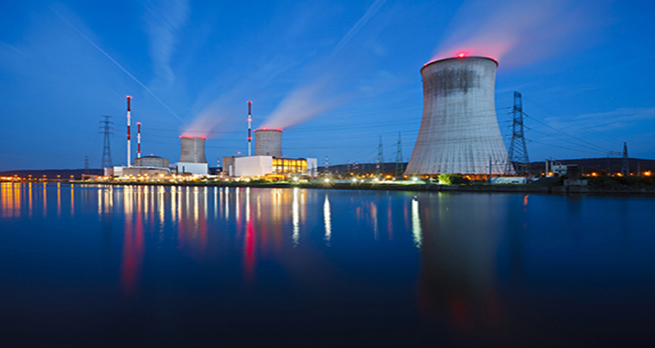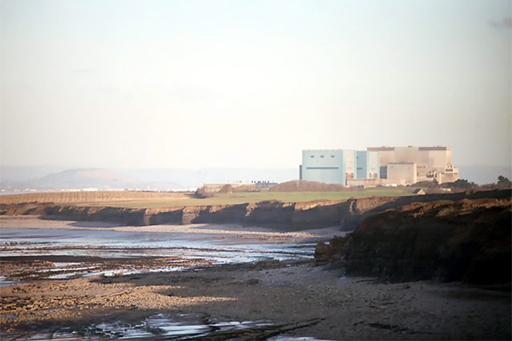4.1.5 New reactor at Hinkley C
In Week 2, you heard that, at the moment, nuclear power provides up to 20% of the electricity requirements of the UK. This is a large proportion, but many of the UK’s power stations are old and will need replacing soon.
To address the energy shortfall that will occur from limitations on the use of fossil fuels, a new nuclear power station in the UK was given the go ahead in 2013. The power station, called Hinkley C, is being built at Hinkley Point, Somerset. On the same site is Hinkley A, a decommissioned Magnox reactor and Hinkley B an AGR reactor that has been running since the early 1970s. Once built, it is hoped that the two new reactors will provide about 7% of the UK’s electricity. They are being built by a consortium led by EDF Energy and will be half owned by Chinese investors.
Hinkley C will be a modern power station with significant differences to the older reactors on the site, in both the design of the power station and the issue of radioactive waste. Hinkley C’s reactors are the first to be built post-Fukushima and their design takes into account lessons learned there and in other nuclear incidents.
Some of the improvements are listed below.
- The European pressurised reactors (EPRs) are an improvement on the pressurised water reactor and a huge improvement on the old Magnox and AGR systems. THE EPRs will be more efficient in producing energy and so need smaller amounts of fuel which will reduce the risk of a major accident.
- The floor of the reactors is on a base of 6m concrete with channels carved into it. In the event of a meltdown, this should stop the molten core burning through the floor and guard against leakage into the environment.
- Hinkley will have two concrete walls each over 1m thick. These are designed to protect the reactors and even to withstand aircraft strikes!
- In a direct response to the events at Fukushima and the importance of the cooling systems to safety, there will be two extra back-up generators in widely spaced, waterproof buildings.
In the next section, you will hear about how the developments will also improve the management of nuclear waste.

